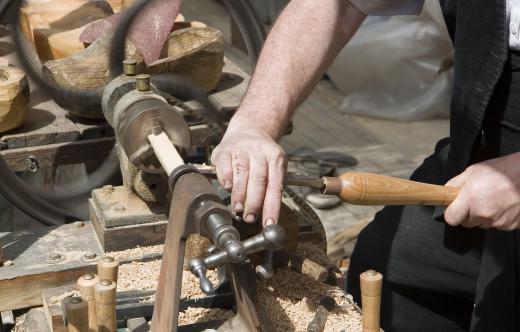A copy lathe is a special type of lathe that mimics a template or shape to produce the same item continuously. This is mostly used for hard-to-make or irregularly shaped items that would otherwise be difficult to reproduce without fault. To do this, the item is produced once or a template is purchased, and the copy lathe follows the shape and depth to perfectly reproduce the item. This function is provided on most lathes, because many lathe workers find it useful.
The copy lathe is the copy machine of the woodworking and metalworking world. It starts with the worker creating a shape or getting a template. Templates are just pre-made pieces that are no different than if the worker were to create the shape himself or herself. Getting a template is easier, but templates are usually standard shapes like a banister piece or chair leg, so the worker may be unable to find a template to fit his or her needs. In this instance, the worker creates the shape using the lathe or carving by hand.

After the shape is created, it is taken from the cutting part of the lathe. It is then placed in the copy portion of the copy lathe, which is usually on the bottom. The setup is similar to setting the wood or metal in the cutting portion. Both ends of the object are secured, and a metal piece is set up to touch the template. The difference is that the metal piece is not for cutting but for guiding along the template to understand the shape and depth.
Material is placed into the cutting portion of the copy lathe. A worker may have to make a connection between the copy and cutting portion, but having the template in the copy portion also may automatically turn on the copy function. This depends on the copy lathe model.
The material in both the cutting and copy portions of the copy lathe begin to spin. On the copy portion, a stylus softly drags along the template. The cutter responds to the stylus by moving in and out, according to the template’s design. Cutting from one side to the next, the lathe will make an exact copy of the template.
Copy lathes are made so workers can recreate the same shape without any faults. This means the worker can make the same piece, regardless of how intricate it is, as many times as needed. Thomas Blanchard patented the first copy lathe around 1820, mostly for making gunstocks and other irregular items such as shoe lasts.
